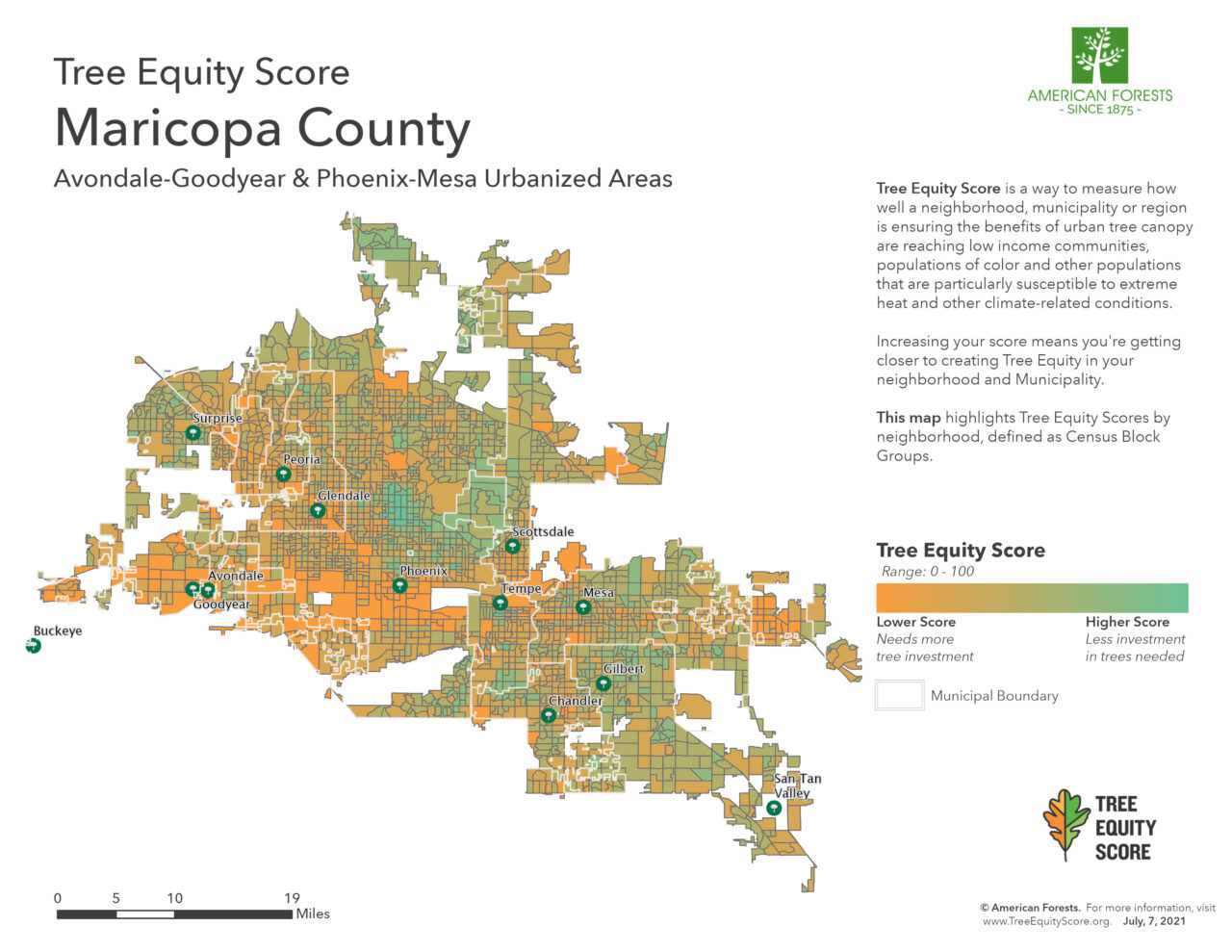THE BLAZING HEAT of 2020 is galvanizing action in Arizona. Residents of Phoenix experienced a record-breaking 53 days above 110 degrees that year. In the county where Phoenix is located, annual heat-related deaths reached an all-time high of 323, nearly a 63% increase from eight years earlier.
Heat is common in the desert city of Phoenix. But the problem had become so severe, largely because of climate change, that council members knew they needed to take action. And they knew trees should be part of the solution, given the power of trees to cool down neighborhoods by providing shade.
They also knew that they needed to plant most of the trees in their underserved communities — where the population is mainly low-income Black and Brown people. In Phoenix, as is in most United States cities, trees are sparse in these communities.
In April, the Phoenix City Council became the first local government entity in the U.S. to vote to create a Tree Equity program. Simply put, Tree Equity is about ensuring that all people benefit from everything trees do, like provide shade, filter the air (which is especially important in Phoenix, ranked in 2020 as having the seventh worst air quality in the country) and create opportunities for tree care jobs.
“Trees are a key component of Phoenix’s heat mitigation work and offer a multitude of benefits,” said Phoenix Mayor Kate Gallego. “Situated in the Sonoran Desert, it is crucial that expansion of our tree canopy prioritizes heat-vulnerable neighborhoods and aligns with our water conservation efforts. We are proud to partner with American Forests to implement data-driven, equitable tree planting that is appropriate for our unique environment.”
American Forests is working with Phoenix to create its Tree Equity program, which the council funded at $1.5 million. So is the Phoenix Metro Urban Forestry Roundtable, a coalition of more than 40 entities that is led by American Forests, the Arizona Sustainability Alliance and the City of Phoenix.


Just two hours south of Phoenix, plans to create Tree Equity also are taking shape. Tree Equity Score, developed by American Forests, is now the primary tool used by the City of Tucson to make decisions on where and how much to invest in trees and other green infrastructure. The tool generates Tree Equity scores for urbanized neighborhoods in the U.S. Each score is an indicator of whether the neighborhood has enough trees so all people experience the health, economic and other benefits that trees provide. Tucson, Ariz., is the first city in the U.S. to factor the scores into its decision making.
“We will not have a city if we don’t deal with climate change and if we don’t apply an equity lens when thinking about it,” says Tucson Mayor Regina Romero, noting that a map of heat islands in her city is the same as a map of low-income com- munities. “Communities of color and low-income communities are on the frontline of climate change. As we address climate change, we need to acknowledge historical and systemic inequities and center the voices of frontline communities.”
Under the leadership of Mayor Romero, the city has set a goal of planting 1 million trees by 2030, which would take its tree canopy from 8% to 15%. The trees will be funded, in part, through a fee charged for each gallon of water used in the city. City leaders hope that trees will help keep the desert city cool and absorb water from heavy storms. The city will focus on planting the right kinds of trees (e.g., drought-resistant trees) in the right places — most notably, underserved communities.
With leadership from cities like Tucson and Phoenix, America is well on its way to being a country with Tree Equity from coast to coast.